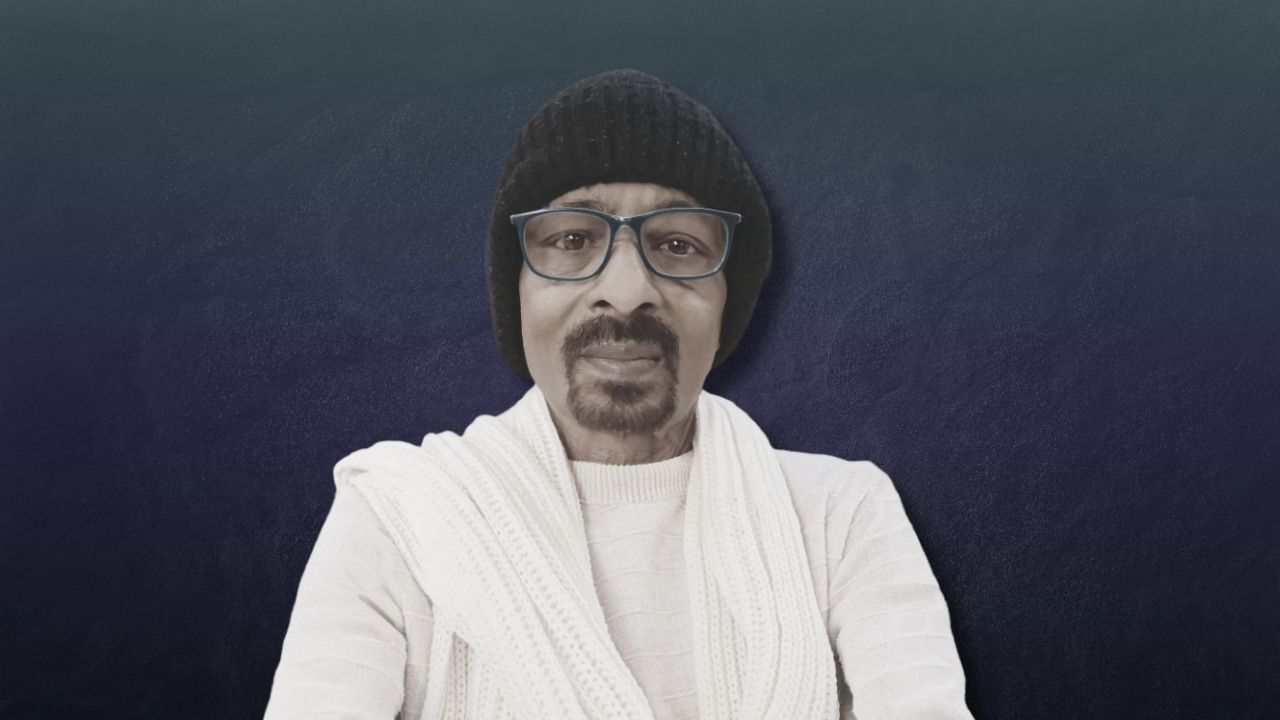One of Karnataka’s most distinctive voices in literature and folklore studies, Ganesh's work delved deeply into caste-based structures in society.
Published Oct 05, 2025 | 11:39 PM ⚊ Updated Oct 05, 2025 | 11:39 PM

Mogalli Ganesh
Synopsis: Belonging to the second generation of Kannada Dalit writers after Devanoor Mahadeva, Siddalingaiah and Aravind Malagatti, Mogalli Ganesh, who passed away on Sunday after a battle with multiple organ ailments, carried forward the Dalit literary tradition while expanding its scope beyond protest to encompass memory, identity, folklore and the everyday complexities of Dalit life. The folk scholar received numerous honours during his career, including the Karnataka Sahitya Academy Honorary Award, Siddalingayya Poetry Award, Kavyananda Award, UR Ananthamurthy Award and Putina Poetry Award.
Noted Kannada Dalit writer and scholar Mogalli Ganesh passed away on Sunday, after battling multiple organ ailments for the last few years. He leaves behind a rich legacy of work dedicated to highlighting human injustice and dismantling caste prejudices.
A professor in the Department of Folklore Studies at Kannada University, Hampi, for nearly 28 years, Ganesh’s writings were often deeply rooted in his own experiences as a Dalit.
His readership extended beyond Karnataka, with several of his short stories being translated into Swedish, German, and Polish, along with Indian languages.
Belonging to the second generation of Kannada Dalit writers after Devanoor Mahadeva, Siddalingaiah, and Aravind Malagatti, Ganesh carried on the Dalit literary tradition but expanded its themes beyond protest to explore memory, identity, folklore, and the everyday complexities of Dalit life.
He carried language as his weapon. “In the times we live in, a writer has to constantly face several barriers. To be able to cross all this, what is the best weapon to use? It is the language…for me, my language liberates me. Creativity and writing is my language,” he said during a conversation on his autobiography Naanembudu Kinchittu at the Bangalore International Centre (BIC) in 2024.
Born on 1 July 1963 in Santemogena village of Channapatna taluk to a Dalit family, Ganesh’s work delved deeply into caste-based structures in society. However, given his background in folklore, he brought in the oral traditions and cultural practices of Dalit and tribal communities into his writing. Over the years, he emerged as one of Karnataka’s most distinctive voices in literature and folklore studies.
One such acclaimed work, Tottilu (2005), translated into English as The Cradle, chronicles the life of untouchable communities in India. He does this by narrating the lives of three generations of a pre-independence Indian feudal family living in Karnataka.
In her review of the book, Anuradha Ghosh writes, “The narrative is a telling critique of the history of this sub-continent that has been witness to different kinds of high and low intensity civil wars on the lines of caste, class, religion, language and culture.”
The characters in the book, who are named as the ‘radio uncle’, Ha-Oh-Ayyo, the son of ‘deaf-mute’, grandma, elder uncle, the King of Mysuru, and several others, come alive through their humour and quirks, Ghosh noted.
“One can see the concerted effort that the author made in trying to infuse the lived nuances of ways of life that exists among the ruling elites of the hillock house and the ‘lowlanders’ – presumably Dalits and Adivasis, comprising the village poor.”
The folk scholar was awarded multiple honours throughout his career, including the Karnataka Sahitya Academy Honorary Award, Siddalingayya Poetry Award, Kavyananda Award, UR Ananthamurthy Award, and Putina Poetry Award, among others.
One of his other widely recognised works was a short story collection, Buguri (The Top, 1992), which is a compilation of stories that delve into the lives and struggles of Dalit communities. Ganesh portrays the arduous labour of Dalit agricultural workers during the paddy harvest season.
Paddy, which is being grown by upper caste members in the story, becomes a symbol of a different life for the Dalits, often marked by hunger and suffering.
Ganesh places paddy at the centre of the caste conflict and uses it to shed light on the systemic exploitation and stark inequalities faced by these workers. In one part of the story, Dalits are hunted, beaten and have their paddy seized by the police.
His latest work was an autobiography titled Naanembudu Kinchittu (I, The Least, 2024).
As N Manu Chakravarthy, film and literary critic, noted during the talk at BIC, the autobiography is an “expression of anguish, trauma, turbulence of an individual. Who at every stage of his life faces annihilation and destruction.”
Throughout the book, Ganesh takes the reader through personal details with audacious transparency, including the cruelty of his father and how that shaped his child version’s vision of a better future.
Chakravarthy also mentioned that Ganesh’s mother breathes life into the text and his life as well, whose insistence on learning became a source of liberation for him.
(Edited by Dese Gowda)
